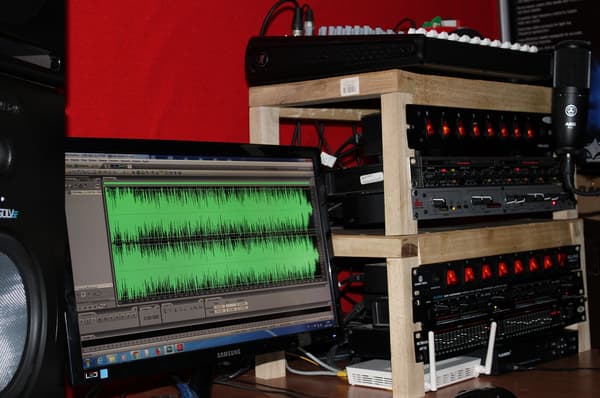Electronic music is not just a collection of synthesized sounds or a genre of club bangers—it’s a culture, a movement, and a constantly evolving expression of technology and creativity. From underground raves to massive festivals, electronic music has shaped social trends, influenced fashion, and created global communities of music lovers and innovators.
On dedicated blogs like Wave_7, which has been active since 2017, the culture of electronic music is explored in depth. These platforms dive into the genre’s complex history, the rise and fall of its many subgenres, and the cultural shifts that accompany each beat. Whether you’re a curious newcomer or a lifelong fan, understanding the roots and evolution of electronic music gives you a deeper appreciation for what you’re hearing today.
The Birth and Evolution of Electronic Music Genres
The story of electronic music spans over a century, but its genre-based evolution really took off in the late 20th century. Here are some key milestones that shaped the cultural and sonic landscape of the genre:
1960s–1970s: Experimental Origins and Krautrock
Electronic music has its roots in the avant-garde compositions of the 1960s, where pioneers like Karlheinz Stockhausen experimented with tape loops and synthesizers. Meanwhile, in Germany, bands like Kraftwerk and Tangerine Dream were defining Krautrock, a genre blending rock instrumentation with electronic innovation. These early efforts laid the groundwork for what was to come, blending artistic experimentation with emerging technology.
1980s: The Dawn of Dance Culture
The 1980s saw the rise of synthesizers and drum machines like the Roland TR-808 and TB-303, leading to the birth of genres like Electro, Synthpop, and Chicago House. In Chicago, House music was born in underground clubs like The Warehouse, combining disco samples with electronic drum patterns. Meanwhile, in Detroit, Techno emerged as a futuristic blend of funk, electronic, and sci-fi soundscapes. These genres spread quickly to the UK and Europe, where they were embraced and evolved further.
1990s: Global Explosion and Genre Diversification
The 1990s marked the global explosion of electronic music. The UK birthed Jungle, Drum and Bass, and Garage, while the rave scene brought Trance and Hardcore Techno to prominence. Goa Trance emerged from the psychedelic beaches of India, while Big Beat acts like The Prodigy and Fatboy Slim stormed the mainstream.
Electronic music became not just a sound, but a lifestyle. Raves, glowsticks, PLUR (Peace, Love, Unity, Respect), and underground warehouses defined the youth culture of the decade.
2000s–2010s: EDM and Mainstream Domination
With the rise of EDM (Electronic Dance Music) in the 2010s, electronic music reached unprecedented popularity in the U.S. Artists like Avicii, Calvin Harris, and Skrillex became household names. Massive festivals like Tomorrowland and Ultra Music Festival drew hundreds of thousands of fans, and genres like Dubstep, Future Bass, and Progressive House dominated charts and airwaves.
But with this mainstream success came saturation. Some genres exploded and then quietly faded, overtaken by newer, more hybridized sounds.
Five Electronic Genres That Have Peaked
While many electronic music genres are timeless, others have seen their golden age come and go. Below are five influential genres that were once dominant but have now faded from the forefront of popularity.
1. Dubstep (Peak: 2010–2014)
Dubstep originated in South London in the early 2000s but gained massive popularity around 2010 thanks to artists like Skrillex, Rusko, and Bassnectar. Characterized by wobbly basslines, half-time rhythms, and aggressive drops, Dubstep took over festivals, clubs, and even pop radio.
But by the mid-2010s, the “brostep” variation had become formulaic, leading to a decline in mainstream interest. While Dubstep still has a loyal fanbase, it no longer commands the same influence.
2. Electroclash (Peak: 2001–2004)
Electroclash blended retro synths with punk attitudes and art-school aesthetics. Acts like Fischerspooner, Peaches, and Miss Kittin brought this glam and edgy subgenre into the early 2000s spotlight.
Despite its initial hype and strong fashion influence, Electroclash quickly burned out, criticized for being more style than substance. It now lives on more as a cultural footnote than a driving musical force.

3. Trance (Peak: 1997–2005)
Trance was once the heartbeat of global dance floors, with euphoric buildups, cascading melodies, and emotional breakdowns. Artists like Tiësto, Armin van Buuren, and Paul van Dyk were Trance royalty.
While Trance still exists in niche scenes, especially in Europe, its dominance has waned significantly with the rise of EDM, Tech House, and more hybrid festival genres.
4. Big Beat (Peak: 1996–2001)
Big Beat mixed breakbeats, rock riffs, and catchy vocal samples. The Chemical Brothers, Fatboy Slim, and The Crystal Method brought this genre to stadiums and commercials alike.
Despite its popularity, Big Beat fell out of favor as other genres with more modern production values took over. Today, it’s rarely heard outside of nostalgic playlists or retro DJ sets.
5. Bloghouse (Peak: 2006–2009)
Bloghouse was a unique moment when music blogs curated indie-electronic party anthems. Think Justice, MSTRKRFT, and Boys Noize. These tracks were raw, fun, and deeply tied to MySpace-era fashion and culture.
But once streaming platforms replaced blogs as the go-to music source, Bloghouse lost its place in the ecosystem. While influential in hindsight, it’s a relic of a very specific internet age.
Conclusion
Electronic music’s culture is one of constant reinvention. Genres rise, evolve, hybridize, and sometimes fade, only to be rediscovered years later by a new generation of producers and fans. The same way House gave birth to Tech House or Trance gave way to Melodic Techno, the electronic landscape is a living, breathing organism.
Blogs like Wave_7 serve as cultural archives and active participants in this evolution. They remind us that electronic music isn’t just about what’s trending now—but about the entire arc of how we got here, what we’ve danced through, and where we’re headed next.
Whether you’re into the deep grooves of House, the nostalgic pulses of Synthwave, or exploring forgotten gems like Bloghouse, there’s always more to uncover in the rich culture of electronic music. The beat may change, but the rhythm of innovation continues.





